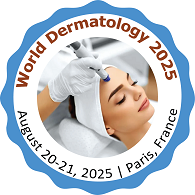Treatment of Hyperpigmentation
On the off chance that pigmentation influences an uncovered site, every day use of wide range SPF 50+ sunscreen is vital to limit obscuring brought on by UVR. Corrective disguise can be utilized.
The accompanying operators can be utilized to help epidermal melanosis, alone or, all the more adequately, in mix:
• Hydroquinone
• Topical retinoid
• Topical corticosteroid
• Glycolic corrosive and other organic product acids
• Azelaic corrosive
• L-Ascorbic corrosive (vitamin C)
Reemerging utilizing synthetic peels, laser, exceptional beat light (IPL) or dermabrasion might be viable yet lamentably hazards additionally harm to the epidermis and arrangement of greater shade. Mindful cryotherapy to little zones of postinflammatory pigmentation can be compelling however chances bringing on lasting hypopigmentation.
Restorative cover utilizing make-up is in some cases the best counsel.
Types of hyperpigmentation:
Generalised hyperpigmentation
Summed up hyperpigmentation may once in a while emerge from over the top circling melanocyte empowering hormone (MSH), when it regularly has a bronze tint. It happens:
• In 95% of patients with Addison sickness when it is more noticeable on weight regions, in skin folds, on scars and inside the mouth
• In 90% of patients with haemochromatosis, when it is more unmistakable on the private parts, in skin folds and on sun-uncovered destinations
• Rarely in metastatic melanoma: diffuse melanosis cutis
• In individuals treated with afamelanotide
Localised hyperpigmentation
Restricted pigmentation might be because of melanin, haemosiderin or remotely determined shade.
In the event that dull patches are watched, the primary determinations to consider are:
• Benign pigmented skin injuries, for example, melanocytic naevi (moles), seborrhoeic keratoses and lentigos
• Skin tumors, for example, melanoma and pigmented basal cell carcinoma
• Post-provocative pigmentation due to earlier harm, momentum or earlier incendiary skin malady, for example, dermatitis, particularly in dull cleaned people or settled medication ejection
• Current or past shallow skin disease, especially pityriasis versicolor and erythrasma.
• Chronic pigmentary scatters, especially melasma (facial pigmentation)
• Photocontact dermatitis to specific plants
• Thickened skin eg acanthosis nigricans or ichthyosis
• Pigmented purpura because of seeping into the skin, eg capillaritis, decrepit purpura, as an indication of venous ailment, or after varicose vein surgery or Sclerotherapy.
Related Conference of Treatment of Hyperpigmentation
15th International Conference on Cosmetology, Beauty and Dermatology
22st International Conference on Cosmetic Dermatology Trichology and Plastic Surgery
8th Geriatrics and Healthcare Conference: For a better Aging Care
20th International Conference on Alzheimers Disease & Dementia
25th International Conference on Dermatology and Skin Care Sciences
Treatment of Hyperpigmentation Conference Speakers
Recommended Sessions
- Aesthetic Surgical Procedures
- Contagious Skin Infections
- Derma-Pathology
- Dermatological Diseases
- Dermatology
- Entrepreneurs Investment meeting
- Hair Transplant Surgery
- Hair Transplantation
- How Can Technology Help to Treat Melanoma?
- Microdermabrasion Treatment
- Rejuvenation and Resurfacing
- Side effects of cosmetics
- Skin Cancer
- Skin Grafting
- Treatment of Hyperpigmentation
- Venereology
Related Journals
Are you interested in
- ACNE - Dermatology-2025 (France)
- ACTINIC KERATOSIS - Dermatology-2025 (France)
- Advances in Cosmetic Dermatology - Cosmetology 2026 (Thailand)
- Aesthetic Medicine and Science - Cosmetology 2026 (Thailand)
- Artificial Intelligence in Skin Diagnostics - COSMETIC DERMATOLOGY 2026 (France)
- BACTERIAL SKIN INFECTIONS - Dermatology-2025 (France)
- Beauty Salon Management - Cosmetology 2026 (Thailand)
- Beauty Therapies - Cosmetology 2026 (Thailand)
- Business of Cosmetology - Cosmetology 2026 (Thailand)
- COMMON WART - Dermatology-2025 (France)
- Cosmetic Dentistry - COSMETIC DERMATOLOGY 2026 (France)
- COSMETIC DERMATOLOGY - Dermatology-2025 (France)
- Cosmetic Dermatology - COSMETIC DERMATOLOGY 2026 (France)
- Cosmetic Surgery - COSMETIC DERMATOLOGY 2026 (France)
- Cosmetic Surgery and Body Contouring - Cosmetology 2026 (Thailand)
- COSMETIC/AESTHETIC DERMATOLOGY - Dermatology-2025 (France)
- Cosmetics, Fragrances & Beauty Products - Cosmetology 2026 (Thailand)
- Cosmetology & Hair Care - Cosmetology 2026 (Thailand)
- Cosmetology & Skin Science - Cosmetology 2026 (Thailand)
- Current Research in Dermatology and Cosmetology - COSMETIC DERMATOLOGY 2026 (France)
- DERMA PATHOLOGY - Dermatology-2025 (France)
- DERMATOLOGICAL DISEASE - Dermatology-2025 (France)
- Dermatological Investigations - COSMETIC DERMATOLOGY 2026 (France)
- Dermatological Pharmacology & Green Cosmetology - COSMETIC DERMATOLOGY 2026 (France)
- Dermatology - Cosmetology 2026 (Thailand)
- DRY SKIN - Dermatology-2025 (France)
- ECZEMA AND DERMATITIS - Dermatology-2025 (France)
- EFFECT OF POLLUTION ON SKIN - Dermatology-2025 (France)
- Facial Treatments - Cosmetology 2026 (Thailand)
- FUNGAL SKIN INFECTION - Dermatology-2025 (France)
- Genodermatoses – Genetics of Skin - COSMETIC DERMATOLOGY 2026 (France)
- HAIR TRANSPLANTATION - Dermatology-2025 (France)
- HUMAN AUTOLOGOUS STEM CELLS - Dermatology-2025 (France)
- Immunodermatology and Dermatopathology - COSMETIC DERMATOLOGY 2026 (France)
- Laser Therapy in Dermatology and Cosmetology - COSMETIC DERMATOLOGY 2026 (France)
- Microbiome-Based Skincare - COSMETIC DERMATOLOGY 2026 (France)
- Nanotechnology in Dermatology - Cosmetology 2026 (Thailand)
- NATURAL AND ORGANIC COSMETICS - Dermatology-2025 (France)
- PEDIATRIC DERMATOLOGY - Dermatology-2025 (France)
- PLASTIC AND RECONSTRUCTIVE SURGERY - Dermatology-2025 (France)
- Plastic Surgery - Cosmetology 2026 (Thailand)
- Regenerative Dermatology and Stem Cell Therapy - COSMETIC DERMATOLOGY 2026 (France)
- ROSACEA - Dermatology-2025 (France)
- SEBORRHEIC DERMATITIS - Dermatology-2025 (France)
- Skin Aging and Anti-Aging Therapies - Cosmetology 2026 (Thailand)
- SKIN CANCER - Dermatology-2025 (France)
- SKIN CANCER - Dermatology-2025 (France)
- Skin Cancer, Melanoma, and Skin Malignancy Therapy - COSMETIC DERMATOLOGY 2026 (France)
- Skin Care Cosmetics - COSMETIC DERMATOLOGY 2026 (France)
- Skin Disorders and Diseases - Cosmetology 2026 (Thailand)
- SKIN GRAFTING - Dermatology-2025 (France)
- Skin Structure, Growth & Nutrition - Cosmetology 2026 (Thailand)
- Techniques in Cosmetology - Cosmetology 2026 (Thailand)
- The Skin Care Industry - Cosmetology 2026 (Thailand)
- Treatments and Trends in Cosmetics - COSMETIC DERMATOLOGY 2026 (France)
- Trichology, Hair, and Scalp Treatments - COSMETIC DERMATOLOGY 2026 (France)
- Venereology and Infectious Skin Diseases - COSMETIC DERMATOLOGY 2026 (France)
- VITILIGO - Dermatology-2025 (France)

